Peppercorns come in four main types—black, white, green, and pink—each with unique flavors and culinary applications. This guide explains their differences, optimal uses, storage tips, and how to choose the best for your dishes.
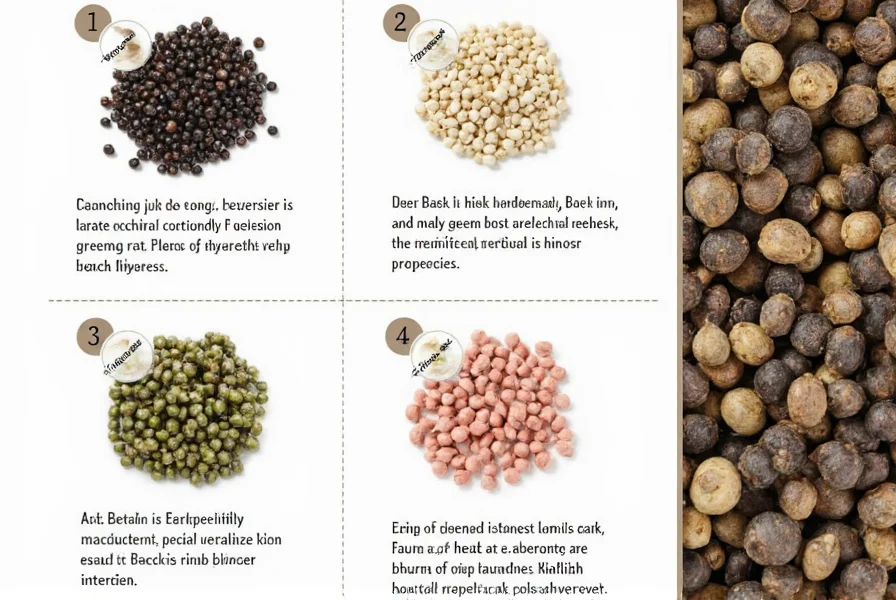
Table of Contents
- What Exactly Are Peppercorns?
- Types of Peppercorns: Black, White, Green & Pink
- Flavor Profiles Explained
- Culinary Uses Across Cuisines
- Buying Guide: How to Choose the Best Peppercorns
- Storage Tips to Preserve Flavor
- Frequently Asked Questions
- Final Thoughts on This Spicy Staple
What Exactly Are Peppercorns?
Peppercorns are the dried fruits of the Piper nigrum vine, native to India and cultivated globally in tropical regions. Despite their small size, they contain piperine—a compound that delivers a signature heat distinct from chili peppers. Understanding their origins and basic characteristics is key to using them effectively in cooking.
Types of Peppercorns: Black, White, Green & Pink
Each peppercorn type is processed differently, resulting in unique flavors and culinary uses:
| Type | Origin | Harvest Time | Processing Method |
|---|---|---|---|
| Black Pepper | India, Vietnam | Unripe berries | Sun-dried |
| White Pepper | Vietnam, Indonesia | Ripe berries | Fermented, then stripped of outer skin |
| Green Pepper | France, Madagascar | Unripe berries | Preserved in brine or freeze-dried |
| Pink Pepper | Brazil, Peru | Ripe berries | Dried naturally |
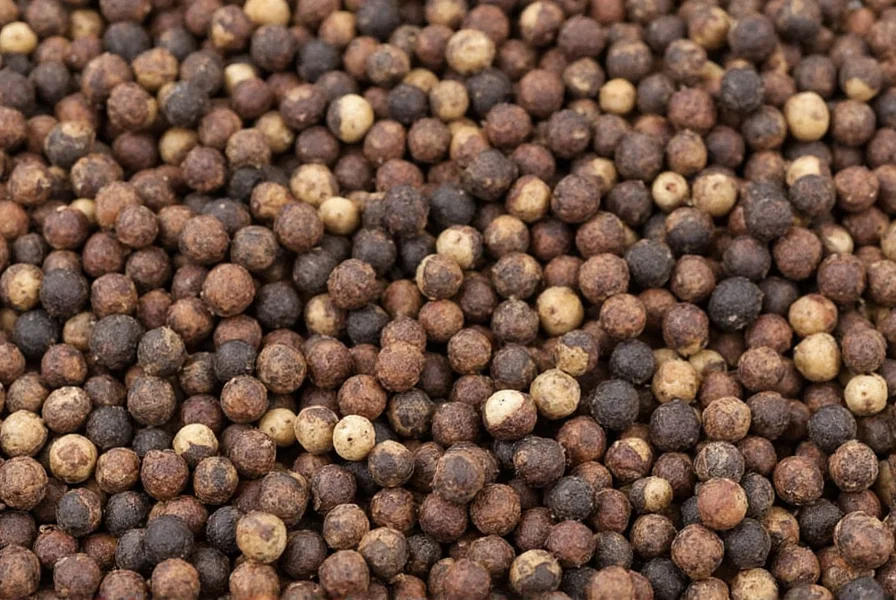
Black Peppercorns – The Classic Spice
The most common variety worldwide. Known for its sharp, earthy, slightly woody flavor. Best for savory dishes like steaks, soups, and marinades. Freshly ground black pepper delivers maximum aroma and heat.
White Peppercorns – Subtle Heat, Smooth Finish
With a milder, creamier flavor, white pepper is ideal for light-colored dishes where visual appeal matters—like creamy sauces, mashed potatoes, or white fish. Its smooth texture makes it perfect for delicate recipes.
Green Peppercorns – Fresh and Tangy
These have a softer, fresher flavor profile with citrus notes. Usually preserved in brine or freeze-dried, they work well in sauces, dressings, and Thai curries. Great for adding a bright, herbal touch.
Pink Peppercorns – Sweet and Fruity Surprise
Technically not true pepper (from Schinus terebinthifolius). Adds a pop of color and subtle sweetness—perfect for desserts, cheese boards, and cocktails. Use sparingly as a finishing spice.
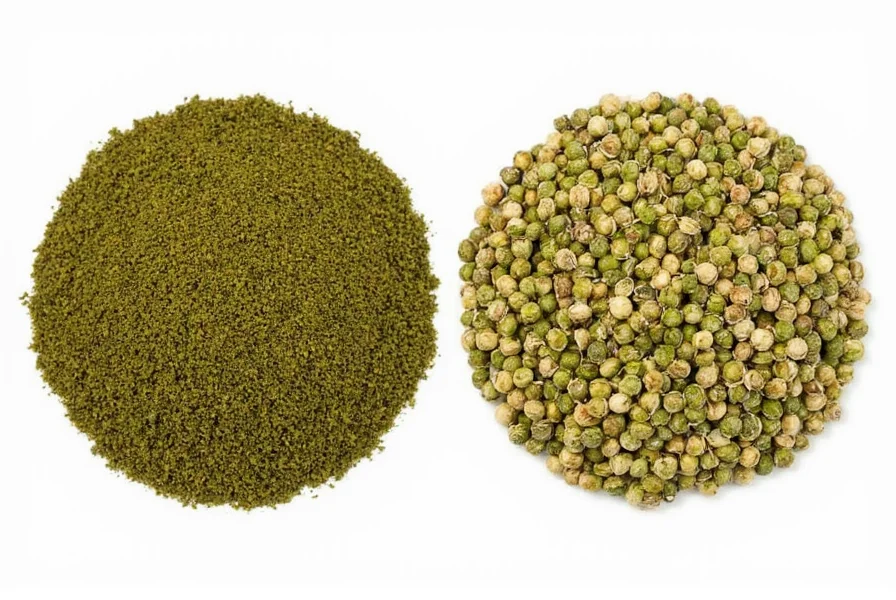
Flavor Profiles Explained
Understanding each peppercorn's flavor profile ensures optimal use in recipes:
- Black Peppercorn: Robust, woody, with a sharp bite. Best when freshly ground over savory dishes.
- White Peppercorn: Mellow, earthy, with less heat. Ideal for light-colored sauces and stews.
- Green Peppercorn: Bright, tangy, almost herbal. Perfect in vinaigrettes or pickling mixes.
- Pink Peppercorn: Fruity, floral, mildly sweet. Excellent for desserts and cheese boards.
Culinary Uses Across Cuisines
Peppercorns play starring roles in global cuisines. Here's how to use them effectively:
| Cuisine | Peppercorn Use |
|---|---|
| French | Sauce au Poivre with coarsely cracked black peppercorns |
| Indian | Whole or crushed in garam masala and curry blends |
| Thai | Black pepper in stir-fries and dipping sauces |
| Mediterranean | Green peppercorns in olive oils and brines |
| Peruvian | Pink peppercorns for garnish and cocktails |
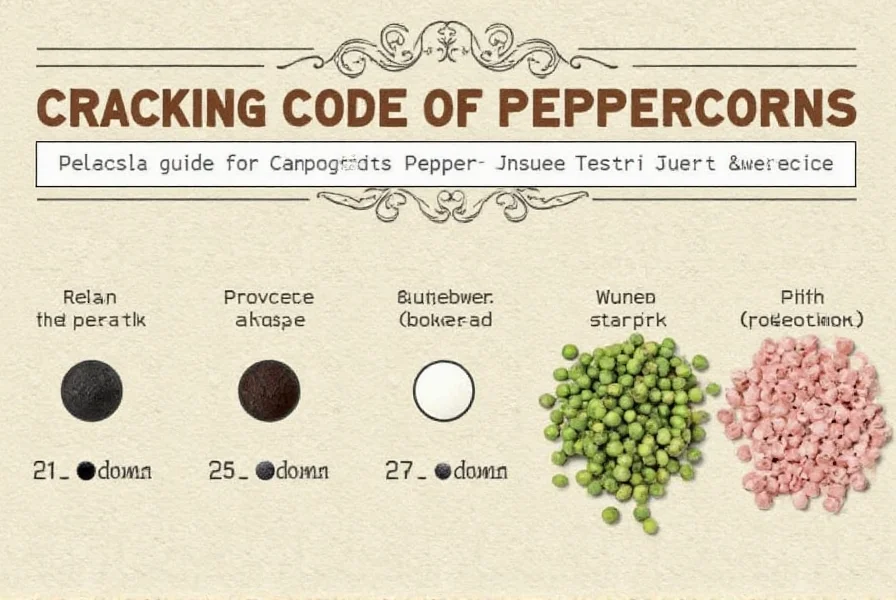
Pro Tip: Grind It Yourself!
Always grind peppercorns fresh. Pre-ground pepper loses 50% of its volatile aromatics within 15 minutes. Invest in a quality pepper mill for maximum flavor impact.
Buying Guide: How to Choose the Best Peppercorns
Quality matters when selecting peppercorns. Follow these tips:
- Whole vs. Ground: Always buy whole peppercorns. Ground pepper loses potency quickly.
- Look for Uniformity: Consistent size and color indicate high quality.
- Aroma Test: Crush a few between your fingers. A strong, fresh scent means you've found a winner.
- Country of Origin: Look for Tellicherry (India) or Sarawak (Malaysia)—these denote premium quality.
Top Picks for Peppercorn Products
| Product Name | Features | Advantages | Use Cases | Occasions |
|---|---|---|---|---|
| Tellicherry Black Peppercorns | Large, mature berries from Kerala, India | Deep, bold flavor; excellent aroma | Steak rubs, marinades, soups | Dinner parties, gourmet cooking |
| Sarawak White Peppercorns | From Malaysia, known for smooth finish | Mild heat with complex undertones | Alfredo sauces, fish dishes | Elegant meals, family dinners |
| Brined Green Peppercorns | Preserved in saltwater solution | Juicy, tangy flavor | Sauces, dressings, Thai curries | Weeknight cooking, fusion dishes |
| Berries de Rose (Pink Peppercorns) | Natural pink hue with sweet note | Adds color and mild heat | Cheese boards, desserts, cocktails | Brunches, dessert parties |
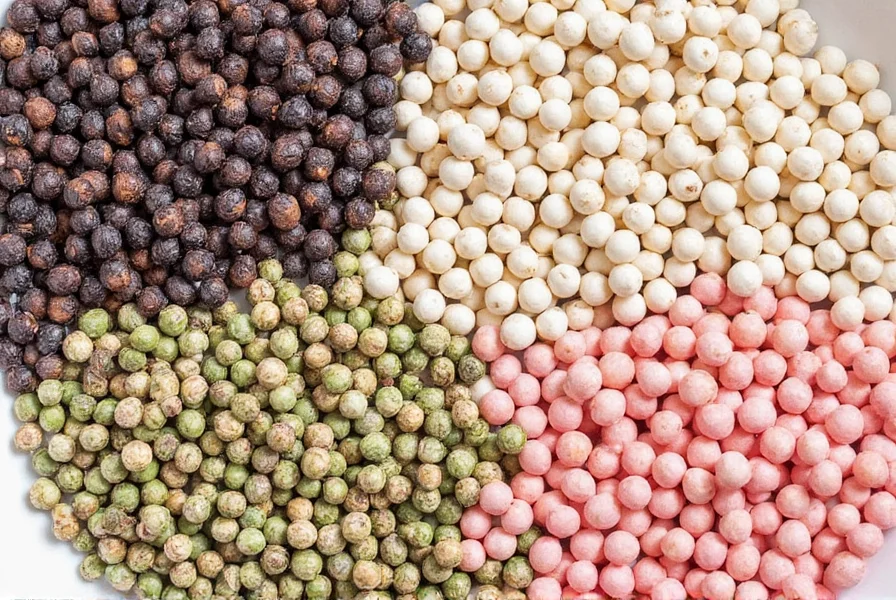
Storage Tips to Preserve Flavor
Keep peppercorns fresh with these simple tricks:
- Airtight Containers: Store in sealed glass jars or tins away from light and moisture.
- Cool, Dry Place: Pantry or kitchen cabinet is ideal—no fridge needed!
- Buy in Moderation: Whole peppercorns last up to a year, but freshness diminishes over time.
- Keep Them Whole: Grinding right before use ensures maximum flavor.
Frequently Asked Questions About Peppercorns
What's the difference between black, white, green, and pink peppercorns?
Black peppercorns are unripe berries sun-dried for bold, woody flavor. White peppercorns are ripe berries with outer skin removed for milder, earthier taste. Green peppercorns are unripe berries preserved in brine for fresh, tangy notes. Pink peppercorns (from Schinus tree) offer sweet, fruity flavor and are not true pepper.
Which peppercorn is the hottest?
Black peppercorns have the strongest heat due to higher piperine content. White pepper is milder but can have sharper heat sensation. Green peppercorns are milder than black, and pink peppercorns have the least heat with more sweetness.
Can I substitute one type of peppercorn for another?
Yes, with adjustments. Black pepper replaces white pepper but adds visual speckles. White pepper works in light-colored dishes. Green peppercorns add tangy flavor, and pink peppercorns are best as a finishing spice rather than a direct substitute.
Why should I buy whole peppercorns instead of pre-ground?
Whole peppercorns retain essential oils and flavor compounds longer. Ground pepper loses up to 50% of its volatile aromatics within 15 minutes. Always grind just before use for maximum freshness.
How long do peppercorns last?
Properly stored whole peppercorns maintain quality for 2-3 years (peak flavor in first year). Ground pepper loses most flavor within 4-6 months. Store in airtight containers away from light and moisture.
Are pink peppercorns safe to eat?
Yes, but with caution for tree nut allergies (related to cashews). Pink peppercorns are safe in culinary amounts, though some may experience mild irritation. True peppercorns (Piper nigrum) don't have this concern.
What's the best way to grind peppercorns?
Use a quality pepper mill with ceramic or stainless steel mechanisms. Adjustable mills let you choose fine powder for baking or coarse cracks for steaks. Avoid blade coffee grinders—they generate heat that alters flavor.
Can peppercorns go bad?
Whole peppercorns don't spoil but lose potency over time. Signs of staleness include diminished aroma, faded color, and lack of bite when tasted. Replace if they no longer deliver strong flavor.
Final Thoughts on This Spicy Staple
Peppercorns are more than just a condiment—they're a culinary cornerstone. From black to pink, each type offers something unique to your plate. Experiment with different varieties to discover new flavor dimensions in your cooking.
For the freshest flavor, always grind peppercorns just before use. Whether you're a professional chef or a home cook, exploring the spectrum of peppercorns will transform your dishes from ordinary to extraordinary.
Ready to Elevate Your Cooking?
Stock up on whole peppercorns, invest in a quality pepper mill, and start experimenting. Your taste buds will thank you!

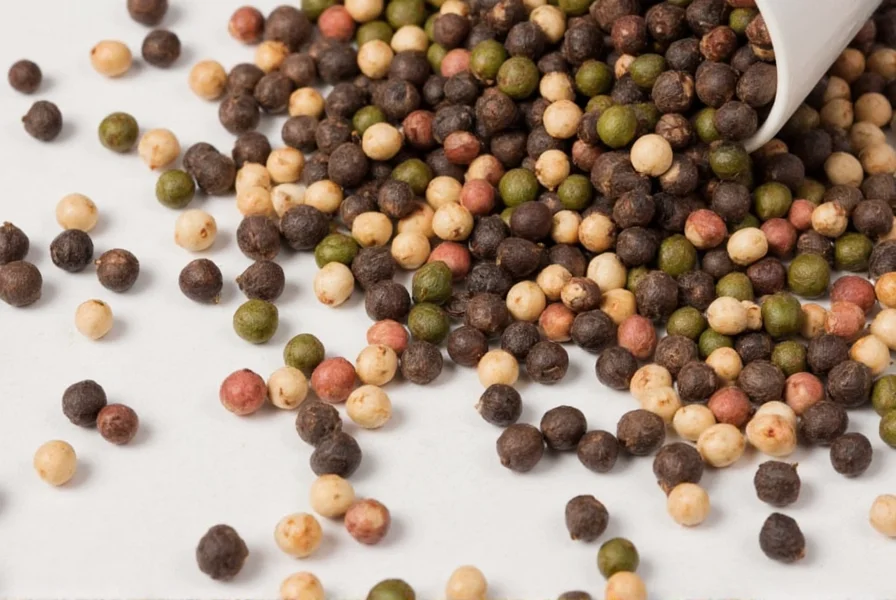









 浙公网安备
33010002000092号
浙公网安备
33010002000092号 浙B2-20120091-4
浙B2-20120091-4